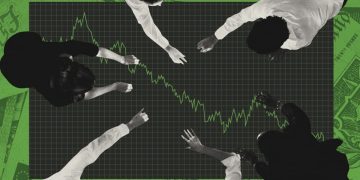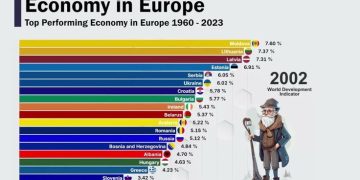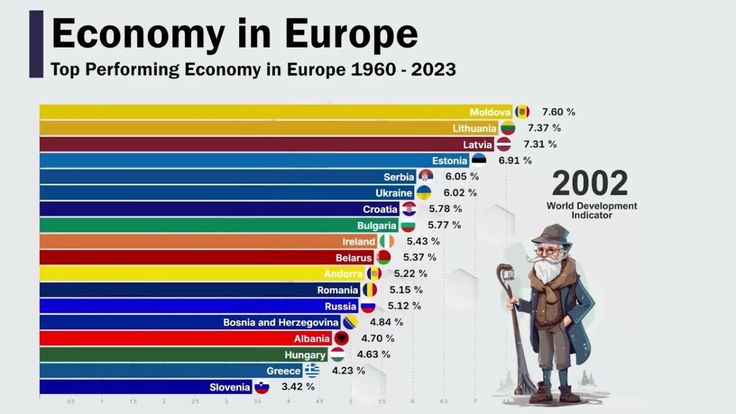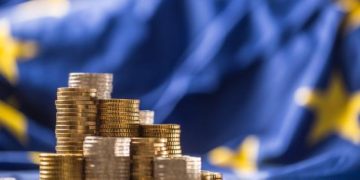**European Fiscal Pressures After the Energy Shock:
Debt, Deficits, and a New Era of Public Finance**
1. Introduction: Europe’s New Fiscal Reality
Europe has entered a new fiscal era. The combination of the 2020 pandemic, the 2021–2023 energy crisis, persistent inflationary pressures, slowing economic growth, and an increasingly fragmented geopolitical landscape has pushed most European states into structural deficits. While the immediate economic emergency has passed, the fiscal effects remain. Governments now face permanently higher spending obligations—energy subsidies, industrial policy, defense build-ups, demographic welfare pressures—while tax revenues are becoming more cyclical and uncertain.
In the decade following the 2008 financial crisis, Europe largely converged around austerity, fiscal discipline, and tight public spending frameworks. But the post-pandemic and post-energy-crisis world has overturned this consensus. Today’s Europe is instead defined by fiscal expansion, state intervention, and a return of industrial policy reminiscent of the post-war reconstruction era. The fiscal rules of the European Union have been rewritten, and the traditional budgetary boundaries that once defined EU macroeconomic policy have blurred.
This article provides an in-depth analysis of Europe’s evolving fiscal pressures:
- How debt levels are shifting across the continent
- Why deficits are becoming structural
- How energy security and industrial competitiveness are forcing governments to rethink spending
- What reforms are emerging in the EU fiscal framework
- And what the next decade of European public finance may look like
2. A Continent of Rising Debt: The Post-Crisis Landscape
2.1 The Pandemic Legacy
When the pandemic hit in 2020, EU governments responded with the most aggressive fiscal stimulus in European history. Public debt ratios surged across the continent, with many states experiencing double-digit increases in a single year. By the end of 2021:
- Italy exceeded 150% debt-to-GDP
- Greece remained over 175%
- France crossed 115%
- Spain approached 120%
- Belgium and Portugal hovered near 110%
These numbers have barely improved since. In many countries, debt ratios have stagnated at historically high levels, and for others—especially France—the ratios have continued to climb. The return to pre-crisis debt stability has not occurred.
2.2 The Energy Shock and the Price of Resilience
From 2021 to 2023, Europe faced its worst energy crisis in half a century. To protect households and businesses from soaring electricity and gas prices, EU governments mobilized an extraordinary fiscal response. Across the EU, over €650 billion was spent on:
- Direct subsidies
- Price caps
- Energy compensation schemes
- Industrial relief funds
- Liquidity guarantees
Germany alone accounted for nearly €300 billion of the support, reflecting its vulnerability as a manufacturing and energy-intensive powerhouse. France, Italy, and the Netherlands deployed massive measures of their own.
The result: deficits widened again just as they were supposed to narrow following the pandemic.
2.3 The Slow-Growth Trap
Europe’s debt problem is inseparable from its growth problem. The continent faces:
- Declining productivity
- Slowing industrial output
- Aging demographics
- Weak investment cycles
- Fragmentation in its capital markets
Without strong nominal growth, high debt ratios become extremely difficult to reduce. The energy crisis further suppressed industrial competitiveness, particularly in Germany, Austria, and Central Europe—regions that historically anchored European growth.
This creates a structural mismatch: rising fiscal obligations, but stagnating economic capacity.
3. Structural Deficits: Why Europe Cannot Balance Its Budgets
3.1 The End of the Austerity Era
The Stability and Growth Pact (SGP), long the cornerstone of EU fiscal policy, imposed two key limits:
- 3% of GDP deficit ceiling
- 60% of GDP debt ceiling
However, nearly every major EU state now violates at least one of these constraints, and the political appetite for austerity has collapsed. What emerged after 2020 is an understanding that strict fiscal consolidation is incompatible with the EU’s urgent priorities:
- Green transition
- Energy independence
- Digital transformation
- Defense strengthening
- Public healthcare capacity
- Industrial competitiveness
The “fiscal space” Europe once sought to preserve is now being openly consumed.
3.2 The Green Transition as a Permanent Fiscal Burden
The European Green Deal is projected to require €620–€700 billion annually in sustainable investment. While private capital is expected to play a role, public spending will remain essential. Governments are now committing to:
- Renewable energy infrastructure
- Grid modernization
- Electric vehicle subsidies
- Carbon-neutral industrial technologies
- Green hydrogen capacity
- Building retrofitting subsidies
These are not temporary expenses—they are multi-decade commitments.
3.3 Re-Industrialization and the Subsidy Race
Europe now finds itself in a subsidy competition with the United States and China. The U.S. Inflation Reduction Act (IRA) triggered a wave of industrial policy interventions across Europe, including:
- Strategic investment funds
- Semiconductor subsidies
- Battery and EV production incentives
- Clean tech manufacturing credits
- Industrial decarbonization funds
The era in which Europe relied primarily on market mechanisms has ended. Public finance is now an active instrument of industrial strategy.

3.4 Defense Spending: A Post-Ukraine Imperative
The Russian invasion of Ukraine forced European governments to rethink security spending. Defense budgets are rising to meet the 2% of GDP NATO threshold, with some countries surpassing it. Germany alone created a €100 billion defense modernization fund, while Poland is targeting nearly 4% of GDP for defense.
This rearmament cycle adds permanent military spending to national budgets.
3.5 Demographic Pressures
Europe is the world’s oldest continent demographically. The consequences for public finance include:
- Higher pension obligations
- Increased healthcare spending
- Shrinking labor force participation
- Rising long-term care costs
Countries like Italy, Germany, and Spain face particularly steep demographic cliffs.
Together, these forces make deficits structural rather than cyclical.
4. The New EU Fiscal Framework: Flexibility Meets Discipline
4.1 Reforming the Stability and Growth Pact
In 2024, the EU introduced a reformed SGP framework. The new rules:
- Focus on expenditure paths rather than rigid targets
- Allow for multi-year country-specific adjustment plans
- Provide flexibility for green, digital, defense, and strategic investments
- Require states with high debt to adopt credible declining debt paths
It is an attempt to balance economic reality with fiscal discipline.
4.2 The Challenge: Enforcement
Historically, EU fiscal rules have struggled with enforcement. The revised framework will face similar challenges:
- Large states (France, Italy) have political leverage
- Small states fear asymmetric discipline
- Elections can shift fiscal strategies overnight
- Geopolitical shocks regularly derail consolidation plans
A rules-based system collides with a world of perpetual crises.
4.3 The Role of the European Central Bank
The ECB is indirectly central to Europe’s fiscal sustainability:
- Its interest rate decisions
- Its anti-fragmentation tools
- Its reinvestment policies
- Its bond market signaling
If ECB support becomes more conditional, states with high debt (Italy, France, Belgium, Spain) may face rising borrowing costs.
The ECB will remain the hidden stabilizer of European public finance.
5. Country-by-Country Breakdown: Diverging Fiscal Trajectories
Germany: The Strained Anchor
Traditionally Europe’s fiscal model of discipline, Germany now faces:
- Falling industrial output
- High energy costs
- Recessionary pressures
- A constitutional debt brake that constrains spending
The energy shock exposed structural vulnerabilities in the German economy, weakening its fiscal position.
France: A Structural Deficit Giant
France consistently runs deficits above EU thresholds. Challenges include:
- High public sector employment
- Costly social protections
- Increasing military spending
- Industrial policy expansion
Debt-to-GDP is trending upward, not downward.
Italy: Chronic High Debt, Modest Growth
Italy’s debt remains above 140%. Despite reforms and EU support, Italy relies heavily on:
- ECB stabilization
- EU recovery funds
- Productivity improvements that are slow to materialize
Fiscal risk remains elevated.
Spain: Strong Recovery but Persistent Imbalances
Spain’s economic rebound has been strong, but:
- Youth unemployment
- Low productivity
- High corporate debt
limit long-term fiscal consolidation.
Nordic and Benelux Countries: Strong but Not Immune
Even fiscally sound states face:
- Aging populations
- Energy transition costs
- Rising defense budgets
The era of easy surpluses is over.
6. The Next Decade: What Europe’s Fiscal Future Looks Like
6.1 Fiscal Integration or Fragmentation?
Europe is approaching a crossroads:
- More integration would involve shared debt instruments, EU-level investment, and deeper fiscal union.
- Fragmentation would mean divergent national strategies, higher bond spreads, and uneven competitiveness.
The political climate will determine which path prevails.
6.2 What Cannot Be Avoided
Regardless of politics, Europe will face:
- Higher long-term public spending
- Structural deficits
- Rising debt service costs
- Continued need for ECB stability tools
- Pressure for tax increases or new EU-level revenues
- Competition with U.S. industrial incentives
Fiscal consolidation alone cannot resolve these tensions.
6.3 The Role of Immigration and Productivity
To sustain public finances, Europe must:
- Increase labor force participation
- Attract skilled migration
- Accelerate digital transformation
- Boost industrial innovation
Without productivity growth, fiscal sustainability is impossible.
6.4 A Permanent State of Emergency Spending
The era of occasional crises has become an era of continuous crises:
- Geopolitical instability
- Climate disasters
- Energy volatility
- Technological competition
- Demographic pressures
Europe must adapt its fiscal structures to this new normal.
7. Conclusion: Toward a Realistic European Fiscal Future
Europe’s fiscal pressures are not temporary—they represent a long-term structural shift in the continent’s economic and political foundations. Governments are no longer simply balancing budgets; they are navigating between competing existential priorities: security, sustainability, competitiveness, and social cohesion.
The coming decade will require not only fiscal innovation but also political courage. Europe must reinvent its public finance system or risk losing ground in an increasingly competitive global economy.
































